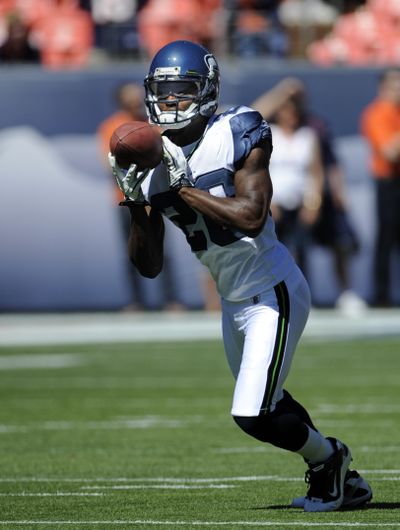Seattle places faith in rookies
Carroll learned to trust youth when at USC

RENTON, Wash. – Before arriving at Southern California, Pete Carroll held the same belief as most coaches at the college and professional levels: Playing freshmen and rookies equals mistakes and likely losses.
Early in his tenure at USC, that belief changed, and Carroll became known for throwing freshman out there and seeing just what they could do.
“As soon as I got there, I realized I was kind of the GM and head coach and the personnel guy and all that, I just flipped,” Carroll said Wednesday. “I realized we were bringing in all these top-shot and top-notch recruits and we weren’t really good at the time and we wanted to see how fast we could get right and get better. So I just forced it on the coaches to play these guys.”
That move worked to the tune of unprecedented success with the Trojans. So it shouldn’t be a surprise that Carroll has brought a similar approach to the Seattle Seahawks.
In last Sunday’s win over Arizona, three of Seattle’s 22 starters were rookies – Russell Okung, Walter Thurmond and Earl Thomas. That number might not seem like much, until the importance of the positions are considered.
• Okung started at left tackle, responsible for protecting the backside of quarterback Matt Hasselbeck.
• Thurmond started at cornerback and was regularly matched up with Arizona star Larry Fitzgerald.
• Thomas started his sixth game at free safety, a position he didn’t play until arriving at Texas.
“They’re going to have to learn the hard way some,” Carroll said. “But when a guy is so talented then you go ahead and make that decision.”
Carroll’s move toward letting younger players get their chance in the spotlight more or less started with wide receiver Mike Williams, now reunited with Carroll in Seattle. Williams arrived at USC in 2002 and instantly became the Trojans’ leading receiver. His 6-foot-5 frame didn’t hurt when tossing him out there to catch passes from Carson Palmer.
It continued a year later with the arrival of running backs LenDale White and Reggie Bush and progressed to the likes of Dwayne Jarrett, Rey Maualuga, Taylor Mays and Matt Barkley, all of whom made major impacts in their first seasons.
Carroll said as time progressed, he found just giving the younger players a small sampling of plays against throwing the entire playbook at them led to their success.
“If you look and see what the young players have that’s unique and what they do really well and ask them to do those things, and don’t ask them to do everything that an experienced player is called on to do, you’ll see them be successful. You’ll see them feel pretty good about themselves,” Carroll said. “As soon as you take them into a realm of techniques and principles that they’re not good at, then it’ll affect all of their play.”
The best example of that strategy might be rookie safety Kam Chancellor.
Until two weeks ago, Chancellor was simply a special teams piece for the Seahawks. But during Seattle’s bye week, Chancellor was given an opportunity to play more and suddenly he found a role.
“I think you get what you deserve,” Chancellor said. “You come here and work hard and you show the coaches you’re willing to do the work to get on the field.
That doesn’t always mean it’s easy on the coaches having to throw out the youngsters and hope they have success. Thomas showed he was ready during offseason workouts, and the Seahawks traded former starter Josh Wilson because they felt confident in Thurmond’s skills.
“If you can play football you can play football,” Thurmond said. “What separates the younger guys from the older guys is the knowledge of the game.
“It’s not really the talent, it’s the knowledge of the game.
“I try and pride myself to be knowledgeable of the game and keep learning.”